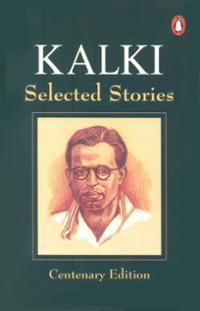
Twelve modern stories by the legendary wordsmiths of modern Tamil. His collection brings together the best of Kalki’s short stories, which contain some of his most colourful and enduring characters and themes of Tamil popular fiction of the nineteen thirties and forties. There is in these stories the heady urgency of the freedom struggle, the piquant humour of the parodied Tamil gothic and devastating social satire. In her sensitive translations, Gowri Ramnarayan has succeeded in capturing the nuances of the gently mordant wit that made Kalki’s stories the highlight of the magazines they were originally published in, creating for themselves a dedicated following that flourishes undiminished to this day. Coinciding with the centenary of Kalki’s birth, this volume is a well-deserved tribute to a writer whose breadth of vision and genius imagined and served a new India.
Author

Tamil language Novel Writer, Journalist, Poet & Critic late Ramaswamy Aiyer Krishnamurthy also known as ‘Kalki’. He derived his pen name from the suffixes of his wife name Kalyani and his name Krishnamurthy in Tamil form கல்யாணி and கிருஷ்ணமூர்த்தி as Kalki (கல்கி). His name also represents “Kalki avatar”, the tenth and last avatar of the Hindu God Vishnu. His writings includes over 120 short stories, 10 novelettes, 5 novels, 3 historical romances, editorial and political writings and hundreds of film and music reviews. Krishnamurthy’s witty, incisive comments on politics, literature, music and other forms of art were looked forward to with unceasing interest by readers. He wrote under the pen names of ‘Kalki’, ‘Ra. Ki’, ‘Tamil Theni’, ‘Karnatakam’ and so on. The success that Krishnamurthy attained in the realm of historical fiction is phenomenal. Sixty years ago, at a time when the literacy level was low and when the English-educated Tamils looked down on writings in Tamil, Kalki’s circulation touched 71,000 copies – the largest for any weekly in the county then – when it serialised his historical novels. Kalki had also the genius to classify the historical and non-historical events, historical and non-historical characters and how much the novel owes to history.